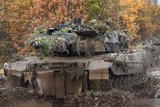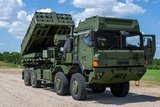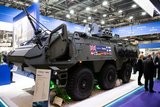Increased scope of CROWS II framework agreement
KONGSBERG has signed a contract with the US Army increasing the number of Common Remotely Operated Weapon Stations (CROWS) in the existing CROWS II framework agreement from 10.349 to 11.690 systems.
The total value of the increase will be agreed upon later this year. Total value of the increase will depend on the US Army's future demand and annual allocations. KONGSBERG has received a purchase order for CROWS II systems valued at 345 MNOK as part of the increased scope of the framework agreement.
CROWS is a joint acquisition program for weapon stations for the US Army`s vehicle programs. A common solution will result in substantial efficiency gains in respect of protection, training, support and further development.
The initial CROWS II framework agreement was disclosed on 22 August 2007.
The Protector Weapon Control System protects military troops by allowing the vehicle's weapons to be operated from a protected position inside the vehicle.
Source: Kongsberg
More from Land Warfare
-
![Hungary set to begin using Hero 400 loitering munitions]()
Hungary set to begin using Hero 400 loitering munitions
Developed by Israel's Uvision and with systems being sold in the thousands to multiple European NATO countries and the US, the Hero family of loitering systems is also in production in the US and Italy, the latter through Rheinmetall.
-
![Lithuanian 1st Division to achieve initial operating capability in 2026]()
Lithuanian 1st Division to achieve initial operating capability in 2026
Lithuania is one of the countries stepping up its defences in the face of the war in Ukraine with a particular focus on its neighbour and Russian ally Belarus, which has been making incursions into Lithuania’s airspace with balloons and drones.
-
Medium knocked out of British Army LMP, with CAVS as heavyweight champion
As the British Army seeks to modernise and consolidate its diverse vehicle fleet, yet another change in direction is underway.























